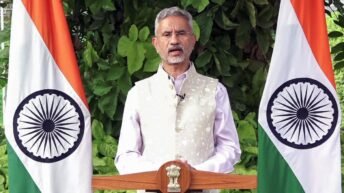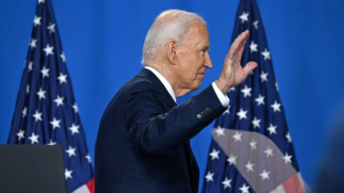|
Listen to article
Getting your Trinity Audio player ready...
|

Earlier in the month, news broke that Adani SEZ was considering expansion into the Philippines with a port project in Bataan, in the island of Luzon. Adani’s investments in critical sectors in strategically positioned nations is not a new phenomenon. His group has initiated investments in the Haifa port in Israel, in Sri Lanka, Myanmar, more recently in Greece, and in power lines in Bangladesh and Nepal. The oil-to-ports conglomerate has not only found success at home but has steadily expanded its footprint globally. It is an opportune time for India’s giant infra companies to expand into the eastern part of the Indo-Pacific—South America.
Adani’s investments are largely in traditional infrastructure such as ports, airports, and power lines. As India enters the fourth industrial revolution with investments in advanced and critical technologies such as semiconductors, solar panels, and EV batteries, it is vital for India’s private sector to take on a more forward leaning approach in uncharted territories such as South America. To support that outreach, New Delhi should initiate and support dialogues both at the track 1 and track 1.5 level with LATAM nations including Chile, Bolivia and Argentina.
Critical minerals that go into advanced technologies such as EV batteries, solar panels and most advanced technologies including defence technologies are largely mined by PRC companies and PRC’s state-owned enterprises monopolise their processing. The hegemonic control of these vital value chains has given the PRC an unprecedented level of leverage over advanced economies by weaponising their dependence on these critical goods.
We have witnessed the effects of the restrictions of REM exports to Japan as far back as 2009, but recently, Beijing has slapped a slew of export control measures for minerals such as germanium and gallium that go into semiconductors. In response to the PLA’s attacks in the Galwan Valley, India banned TikTok, Shein and several other Chinese mobile applications. However, New Delhi, so far, has not had any experience with the PRC’s withholding of strategic mineral supplies and the weaponization of strategic supply chains, the only member of QUAD to have been spared.
To prevent such a scenario, New Delhi ought to cement ties with nations that possess large reserves of critical minerals and also with those that are seeking alternatives to Chinese supply.
The lithium triangle presents an opportunity for lithium mining and processing, and the three nations’ dependence on the PRC in multiple critical sectors makes them vulnerable to the PRC’s economic pressure and coercion. This security risk makes them viable economic partners for India. Western powers have not been able to compete with their Chinese peers due to cost competitiveness.
While the joint venture among NALCO, HCL and MECL also known as KABIL has expressed interest in certain mineral reserves in Argentina, the private sector could play a much more agile and aggressive role in expanding India’s footprint.
Furthermore, India’s economic investments in South America would open up access to the North American market through Washington’s industrial policies such as the Inflation Reduction Act (IRA). The IRA, similar to India’s Production Linked Incentives (PLI), supports targeted industries with subsidies. In the case of the IRA, the mandate is for companies to source their raw materials wholly from the North American trade bloc (USMCA) or a friendly shore—defined as one with an existing free trade agreement with the US. This privileges American partners that have signed free trade agreements with the US, such as Chile, Mexico, and others in the region to take advantage of the subsidies for increased trade with the US and capture the supply chains moving out of the PRC. In an unfortunate turn of events, it is once again the PRC that is finding a route into the US market through devious practices. Multiple news reports have alerted Washington to the increasing presence of Chinese enterprises in Mexico and other ‘friendly shores’ to avert sanctions and trade restrictions by using third nations like Mexico as transshipment hubs. While America’s enemies use its allies to bypass the restrictions placed on them, why shouldn’t India, as the world’s 5th largest economy, leverage the lower costs of production, national security significance, and access to the US market of those LATAM nations?
South America is home to the world’s largest reserves of lithium and has significant deposits of cobalt and copper. Chile also has one of the longest coastlines in the world.
Through the export of ballistic missiles to Philippines and possibly Vietnam, India solidifies its deterrence capabilities in the Indo-Pacific. Moreover, it has become clear that infrastructure is at the heart of great power competition between India and China, whether in Maldives or in Greece. Infrastructure such as ports and mining facilities gain a larger significance in the 21st century due to the increasing intersection of trade and national security policymaking.
Several strategic ports in Chile and Argentina are ripe for major Indian investments. To take these ideas and initiatives forward, India should convene backdoor track 1.5 discussions and adopt a more forward-looking approach to its economic engagement in the region.






Add comment